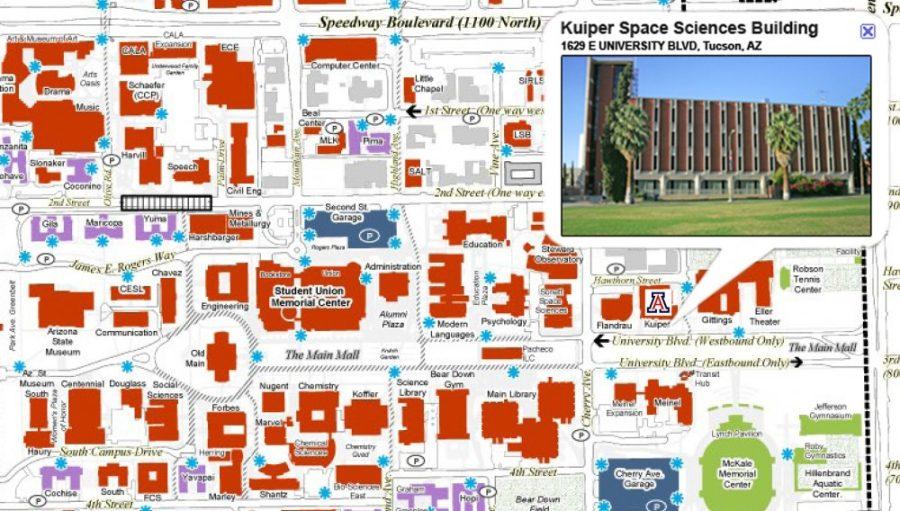The Kuiper Space Sciences Building, 1629 E. University Blvd., is named after Gerard P. Kuiper, “”who really started planetary science at the UA,”” said UA senior scientist Ed Beshore.
Kuiper was born in the Netherlands in 1905 and moved to Tucson for the ideal astronomy weather, including cloudless skies and relatively low humidity levels. He founded the Lunar and Planetary Laboratory in the Atmospheric Sciences Building in 1960, according to the department of planetary sciences Web site.
“”NASA funded the building at the height of the Apollo project to support the study of the moon, before men landed on the moon,”” Beshore said. “”Several spacecraft were sent to the moon to map the ground.””
Kuiper and his team were the first to take close-up photographs of the moon’s surface, which he announced to the world via television in 1964, according to the same Web site.
During his time in Arizona, Kuiper informed government personnel about the space program and contributed scientific policy advice to NASA about ground-based and space probe inquiry of the Milky Way, according to a short biography written by Dale P. Cruikshank, who was one of Kuiper’s student assistants in the 1960s.
“”As an individual who initiated physical studies of the solar system, sometimes in the face of professional criticism, Gerard Kuiper can truly be considered the father of modern planetary astronomy,”” Cruikshank wrote.
Kuiper died in 1973 in Mexico City while searching for observation sites with his wife and a fellow astronomer.
In 1965 NASA funded the construction of the Planetary Sciences building, now called the Kuiper Space Sciences building. In 1972 the department began working toward offering Master of Science and Ph.D degrees in planetary sciences, according to the site.The Lunar and Planetary Laboratory is now housed in three builidngs, the Kuiper Space Sciences building, the Phoenix Mission Building and the Sonett Space Sciences Building, named for Charles P. Sonett, who succeeded Kuiper as director of the lab in 1973 and became the first head of the department of planetary sciences according to the site.









